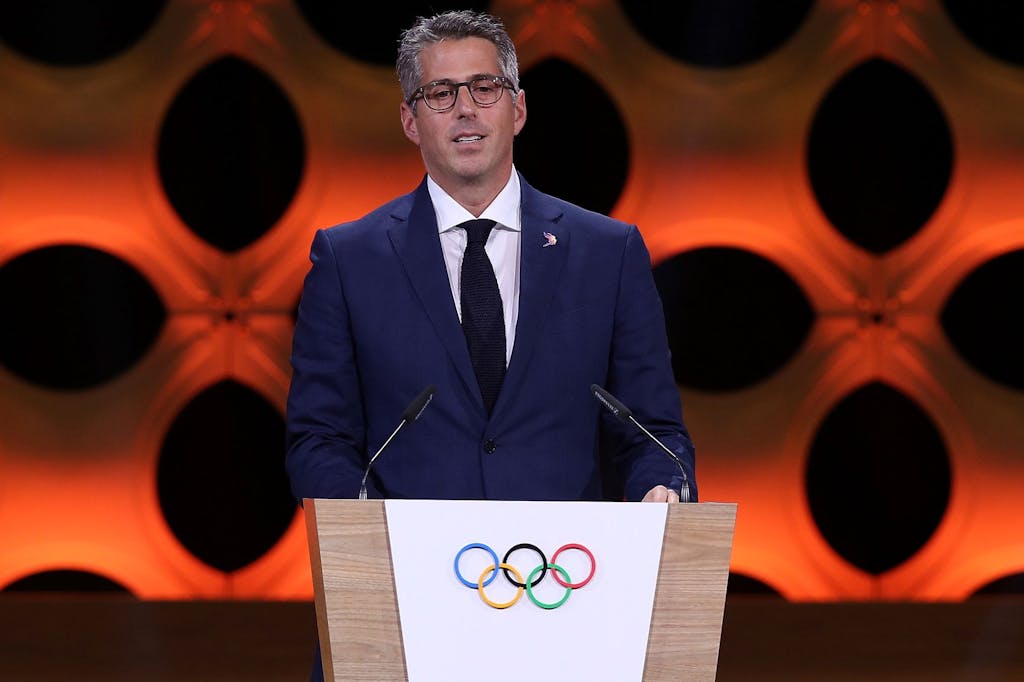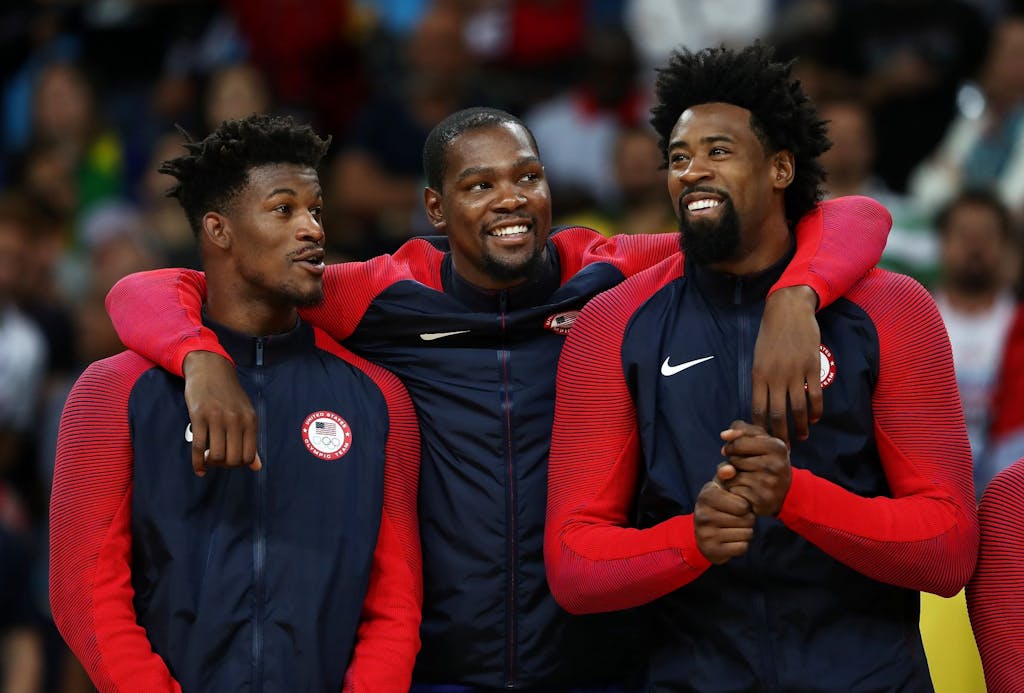Nike will sign its first ever top-tier domestic Olympic sponsorship as part of an eight-year deal ahead of the Los Angeles Olympic and Paralympic Games in 2028.
SportBusiness Sponsorship can confirm from an industry source that a deal between Nike and the joint venture entity that controls all US Olympic marketing rights, from 2021 to 2028, is “in the system”.
The joint-venture was set up by the US Olympic Committee (USOC) and LA 2028 last year.
The deal will cover a comprehensive package of IP and licensing rights, including domestic rights to LA 20208 and rights to outfit Team USA at four Summer and Winter Olympic Games, from 2021 to 2028, with a four-year option to extend.
Industry experts value the deal in the low nine-figures – by some distance the largest amount Nike has ever committed to an Olympic partnership.
SportBusiness Sponsorship understands there is no rate card or menu of rights for LA 2028, but that each deal is valued from a strategic as well as cash perspective.
First-mover advantages
Rob Prazmark, chief executive of the 21 Marketing agency, a sponsorship sales agent for the USOC, told SportBusiness Sponsorship that, if asked, he would take the eight-year, tier one packages to market at about $300m (€266m), or $37.5m per year.
The promotional benefits of the Nike partnership to the joint-venture might reduce that to a minimum guarantee of $200m, or $25m per year, he said, but there could be a “tremendous upside to the joint-venture based on the sale of licensed merchandise over the next eight years, so I would say $200m, plus-plus”.
“From a USOC perspective, they need a quick win with an established sports marketer,” he added. “It’s really about reputation and getting out of the gate very, very quickly – and sometimes you can trade money for that type of exposure.
“The first deal is always landmark, somebody that steps up and says we believe in the Olympic Games and makes a long-term commitment.”
From Nike’s point of view, the early signing will also allow the brand to amortise the rights fee and plan its licensing programme over two Olympic quadrennials.
Nike has previously taken supplier roles at the Sydney 2000 Olympic Games in a deal worth several million dollars and struck less than one year before the Games, and Rio 2016, in a deal worth $15m, signed in April 2012.
Nike has also been a USOC sponsor since 2005 when it took over from sporting goods rival adidas, initially paying about $10m over the first eight years, or $1.25m per year. Its current deal, from 2017 to 2020, is thought to be worth about $4m per year.
It is thought LA 2028 chairman Casey Wasserman (pictured below), who remains chief executive of the Wasserman Media Group, and has close links with the Nike organisation, has driven the new deal.
The Legends agency – tasked with developing, identifying and selling sponsorships across the LA 2028 and Team USA platform – began selling sponsorships in January.

Natural fit
Michael Payne, the former International Olympic Committee marketing chief and advisor to the LA 2028 bid, said the partnership between Nike and the LA Games represents a natural fit between two lifestyle brands.
“LA is an incredibly powerful lifestyle brand in its own right,” said Payne. “There are a few cities in the world that project such a positive, outdoor lifestyle, so bringing on board a leading lifestyle company who can also be a key catalyst in your messaging and positioning, for me, it’s a natural fit.”
Although not involved in the deal, Payne is not surprised that Nike has taken a tier one position, just as adidas did at Athens 2004, Beijing 2008 and London 2012. Japanese sports brand Asics is a tier one Gold Partner at Tokyo 2020.
“You can easily imagine the thinking from Nike’s perspective: this is a traditional category, this is America, this is California. And this is the whole lifestyle. Do we want a competitor to step in there? Are we going to take the risk of sitting back and allowing a competitor to have a lunch with the organisers?
“The five rings are still probably more powerful in the states than they are in a lot of other countries. Even at double-figure millions per year, if you get it wrong, you’re not going to be fired at that investment level, given how much you might get back in licensing.
“Nike is not traditionally a defensive player, but providing you’ve got an intelligent discussion right at the top and agree to work it out further down the road, it makes complete sense.”
Activation
Although the inventory, packages and programmes are still to be built around LA 2028, it is expected that Nike will activate around youth and grassroots sport.
“With a 10-year runway, there’s an opportunity to build real national programmes around sport and education, sport and inner-city communities and sport and health across the whole portfolio.
“You’re creating an engagement platform that is taking the opportunity beyond that three-week window of LA 2028, and you’ve got a real America-first agenda.”
That said, Payne believes that top-tier deals beyond the traditional sports apparel category will be more innovative over the term.
“Some of the other partners that will come on board will be far more illustrative or indicative of whatever new thinking will be coming out of LA and of what it means to have a 10-year runway to the Games as opposed to the traditional four or five.”
Nike is also likely to activate strongly around 3×3 basketball – introduced as an Olympic medal sport for the first time at Tokyo 2020 – and urban sports such as indoor rock climbing.

Licensing
Nike can begin to exploit its licensing rights to LA 2028 after the 2024 Olympic Games in Paris, and Payne believes the 2028 games could be a revelation from a licensing perspective.
“Licensing has been underdeveloped because the structure of the Olympic movement is one where the organising committee can only really do something in the host country.
“It can’t go outside the host country without clearing it with National Olympic Committees, so it’s been too complicated.
“The IOC has tried to pull it together, but the revenue opportunity was so miniscule compared to broadcast or TOP and local sponsorship revenues.”
With the Games coming to a major, single market in America in 2028, Payne now believes: “You’ve got enough there in play, and if you start to extend that – again, using the LA lifestyle brand – you can potentially break the mould.”
Payne expects the domestic revenue target figure of $2.5bn to be surpassed not only because of sponsorship revenue, but from licensing and hospitality revenue.